| 1 | Virginia opossum |
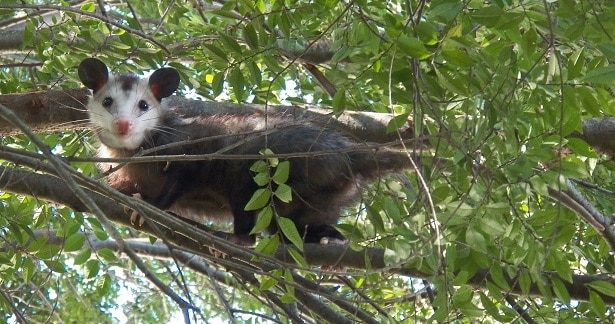
The main opossum in the USA, inhabiting dozens of states. Its arch enemy (except cars) is the western diamondback rattlesnake, or at least it was, until it successfully evolved venom resistance epochs ago. Western diamondbacks cause the most human fatalities of any US snake, so small mammals are no problem, but the Virginia opossum has a peptide in its bloodstream which deactivates the toxins. They’re immune by their very nature, taking painful bites and fleeing into the bushes at top speed, when the confused rattlesnake expects them to roll over.
One study injected mice with a Virginian opossum serum, and found that they too became immune. Virginia opossums are even resistant to the Russell’s viper of India, despite the two living thousands of miles away. Scientists have wondered whether they could extract this opossum peptide and turn it into a marketable snakebite shield.
Virginia opossums aren’t immune to all venoms. A 1976 study injected them with Indian cobra, cape cobra and Chinese cobra venom and triggered a slow death. But they did survive venom from eastern diamondbacks, cottonmouths, and copperheads.
| 2 | Mongoose |
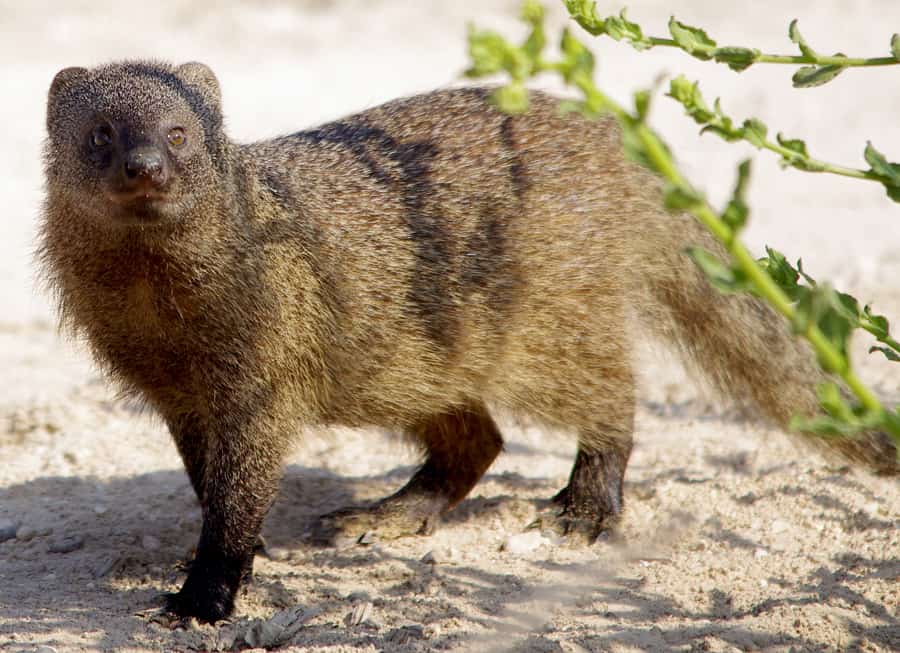
The boldest, cockiest snake-resistant animal. The mongoose doesn’t flee from the sight of cobras – it hunts them across the African savannah, for their tasty serpent meat.
Mongooses have the initial ability of extreme speed, allowing them to effortlessly dodge a cobra’s lunges mid duel. Over the ages, their eyes have particularly adapted for snake-style manoeuvres. However, if they fail to dodge, mongooses have venom resistance as a backup. They can take a bite from a forest cobra, red spitting cobra, or Egyptian cobra without succumbing to their merciless toxins.
The precise defence method is different to opossums. Instead of antivenin peptides in their blood, mongooses have evolved a different shape of acetylcholine receptor in muscle cells. Normally, cobra neurotoxins bind to these receptors and disrupt brain signals which control muscle contraction and relaxation. The result can be total paralysis. But with the mongoose, these snake-borne neurotoxins simply bounce off the receptors, like an incorrect jigsaw piece that can’t be rammed in no matter how hard you push.
| 3 | Savannah monitor |
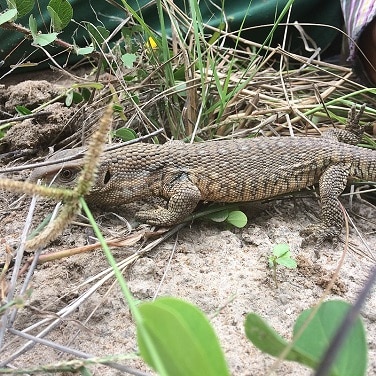
A slow, bulky reptile which rarely exceeds 1 metre. This common African monitor plods around the savannah all day, taking its time. It tends to live in heavy cobra environments, the same environments where mongooses often beat up cobras.
However, the option of fleeing at high speeds, an option open to so many animals, is simply not possible for the savannah monitor. So instead, this reptile evolved a more effortless defence: venom resistance, particularly against alpha-neurotoxins of cobras. It’s the only varanus reptile member to be resistant; this study found no resistance in the closely related komodo dragon and perentie.
Remember the acetylcholine receptors in muscles we just discussed? The amino acids in them have a natural negative charge. Therefore, cobra neurotoxins have evolved a strong positive charge over the ages, to be drawn to them like a magnet. In other monitors, the receptors have the usual negative charge, but the savannah monitor is the lone exception. Less neurotoxins manage to bind per bite, and consequently, the savannah monitor can withstand far more cobra venom without succumbing to paralysis.
| 4 | California ground squirrel |
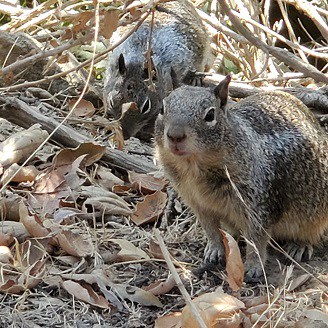
This burrowing squirrel is part of the furniture in California, so common that locals walk past it without bothering to think. However, one secret fact only uncovered since the 1970s is their resistance to rattlesnake venom, particularly the northern pacific rattlesnake (crotalus oreganus). This species has necrotic venom rich in toxic metalloproteinses. It’s a mammal eater, yet the Californian ground squirrel can take a fully fledged bite without convulsing and dying.
Not only that, but the squirrel will stand its ground, pummelling down furiously on the rattlesnake’s back and throwing pebbles in its face. Sometimes the squirrel wins the battle after being bitten; researchers have had to drag the poor snakes clear before.
The more rattlesnakes live in an area, the higher resistance the locals squirrels have. A 1987 study injected California ground squirrel blood serum into mice, and found that those from Sunol and Winters (rattlesnake dens) increased the mice’s resistance to the venom, transferring the shield across. Meanwhile, those from the Sierra Valley north of Truckee added no resistance, a rattlesnake-free zone. Neither did the serum of arctic ground squirrels from central Alaska.
| 5 | Honey badger |

The internet’s favourite savage furry pet, because there’s nothing cuter than a fluffy mammal which walks over to snakes and casually bites their heads off. The honey badger of Africa (not a real badger) is immune to numerous snake toxins, including cytotoxins and neurotoxins. It possesses a similar mutation in the nicotinic acetylcholine receptors in muscles, morphing their shape and preventing alpha-neurotoxins from binding.
There are dozens of epic snake battles scattered across the web, including one duel involving a puff adder. This is a thick-bodied African serpent which can go weeks without moving. In night-time shrubland lit only by the torchlight of researchers, a honey badger strolled up to the puff adder without a care in the world. For a while, the two circled each other cautiously. Eventually the honey badger got bored, and unlike the careful, ninja-like mongoose, it just grabbed the puff adder and commenced eating.
In the process, the puff adder landed a bite, and the honey badger suddenly fell unconscious. It lay in a honey badger coma for two hours, but eventually its natural resistance kicked in. It brushed itself off, and finished eating its puff adder meal as though nothing has happened. Another battle involved an orange cape cobra, which it chased up a tree and forced to drop from a branch.
| 6 | European hedgehog |
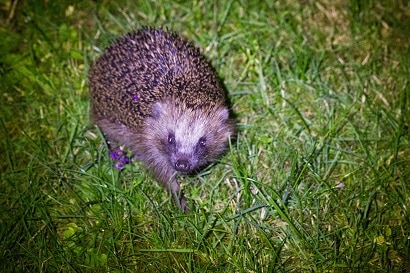
The common hedgehog across Britain, France and more, with 6000 spines on its back, capable of shrinking down into a compact ball. Hedgehogs have evolved against a specific snake – the adder (vipera berus), which has an equally massive range. Adder venom is loaded with powerful haemorrhagins, causing blood to pour from small wounds, but when these gain access to the hedgehog’s bloodstream, they find themselves deactivated and unable to unleash their usual mayhem.
In 1996, scientists discovered why – a molecule called erinacin in the hedgehog’s muscle tissue. This molecule is also active against snake species thousands of miles away, including Brazilian jararaca (bothrops jararaca).
Rather than a peaceful herbivorous hedge dweller, the hedgehog often feasts on small animals, and adder meals have been regularly sighted. With this innate resistance, they need not fear gulping down an entire venom gland in the snake’s neck and dying 6 hours later. Erinacin also deactivates metalloproteinases in snake venom, toxins which shred healthy skin tissue and cause necrosis. The hedgehog is like a mini spiked tank with multiple layers of armour.
| 7 | Blue-tongued lizard |
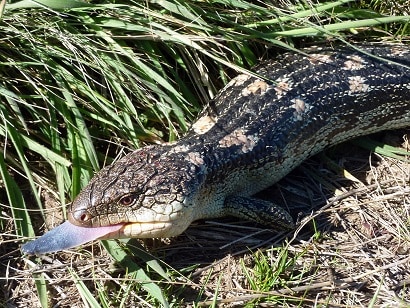
This Australian venom-resistor is one of the most targeted. The blue-tongued lizard is named for its blue tongue, but otherwise looks normal. It’s grey scaled, with short stumpy legs and a thick muscular body. Without the ability to flee, it has evolved venom resistance, and specifically against the red-bellied black snake, the species responsible for the 3rd most Australian snakebites per year.
Red-belly venom is filled with pro-coagulants, which warp prothrombin and cause excess blood clotting. However, the blue tonged lizard can walk away from a savage bite unharmed, and continue as though nothing happened. This was a recent discovery, only in 2021, and the study also found that local lizards which prey on the red-belly had no venom resistance.
Unlike erinacin in hedgehogs, the magic compound remains unidentified. Scientists thought that the prothrombin in blue-tongued lizards could have been a special shape, but other snake venoms warped it just as easily. Therefore, it’s believed that the reptile possesses a mystery peptide which intercepts red-belly toxins specifically.
| 8 | Southern plains woodrat |
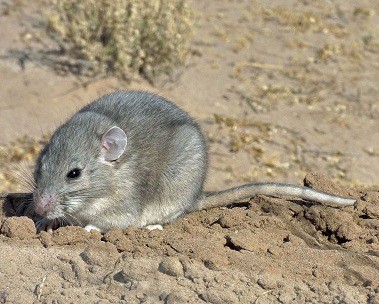
The western diamondback rattlesnake must be a very confused snake, as its prey keeps on becoming resistant. The opossum is one, but in 1976, the Southern plains woodrat’s natural resistance was discovered purely by accident. A student in the Texas A&M University was asked to feed a snake they were keeping, and threw across a captive woodrat. It was a mundane, everyday exercise, until the woodrat mysteriously survived the bite.
A comparison with mice followed in 1984, when the two species were given varying quantities of western diamondback venom. At 0.25 milligrams, the mice suffered massive internal haemorrhages and died, but it took 7.5mg before the woodrat suffered the same fate. Specifically, the woodrat is immune to the haemorrhagic activity of rattlesnake venom, rather than neurotoxins, which few rattlesnakes possess.
Neotoma micropus is called the packrat due to its habit of gathering things, particularly shiny items. Its snake venom resistance is shared by other neotoma family members, hinting that it originated long ago, before they diverged. These included the desert woodrat and white-throated woodrat.
| 9 | White-eared opossum |
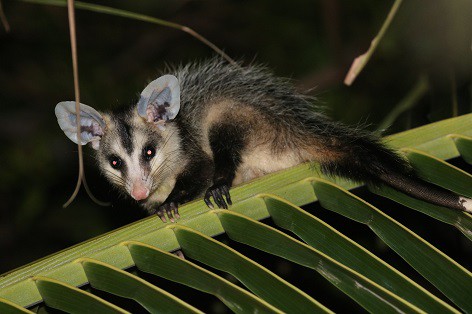
This Brazilian opossum lives far away from its Virginia cousin. It’s an omnivore with a striped face and extremely hairy back. White-eared opossums (Didelphis albiventris) can go from eating passion flower and mulberries one minute, to tucking into a viper the next. Consequently, their body has evolved resistance to venom, and in particular, the phospholipase A2 (PLA2) class of toxins. This is a common family in snakes, known for cytotoxic powers that cause necrotic decay. However, Didelphis albiventris and the big-eared opossum are the only mammals with confirmed resistance. There’s also a bloodstream protection factor called DA2-II.
A less resistant animal might just eat the snake’s lower body, but white-eared opossums always eat the head first. The first contact of their claws is with the back of the head. Their next move is to shake and toss the snake around violently until it gives up. Then the opossum commences eating, holding the body down with its foot. Snakes they eat include Liotyphlops beui and the Brazilian jararaca.
| 10 | Central bearded dragon |
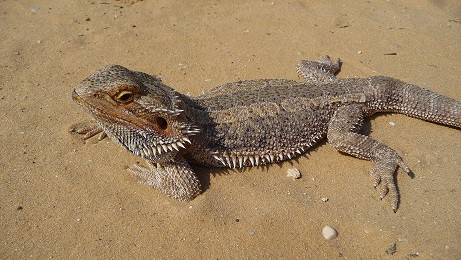
This leathery-looking reptile inhabits a wide chunk of central Australia. Its range touches almost zero coastline, but they’re abundant in the inner rocky deserts, plus some forests. Central bearded dragons are excellent climbers, and are already afforded some protection from snakes by their spiky skin, which makes grabbing them difficult. However, they also have a handy venom immunity. This is a similar style to the Egyptian mongoose: resistance to paralysing alpha-neurotoxins, via an unusually shaped nicotinic acetylcholine receptor.
Like savannah monitors, central bearded dragons are stiff and slow, forcing their evolutionary hand into resistance instead. One study tested Indian cobra (naja naja) venom, which doesn’t live in Australia but is loaded with similar alpha-neurotoxins. Compared to chicken embryos, central bearded dragon embryos were able to cope with 5 times more venom. They also discovered a resistant fish, the three-spined stickleback (Gasterosteus aculeatus). This could cope with 10 times more venom than a zebrafish.
Other skills of a central bearded dragon include darkening its own skin colour, hissing loudly, and making small yet intimidating leaps toward the predator.
